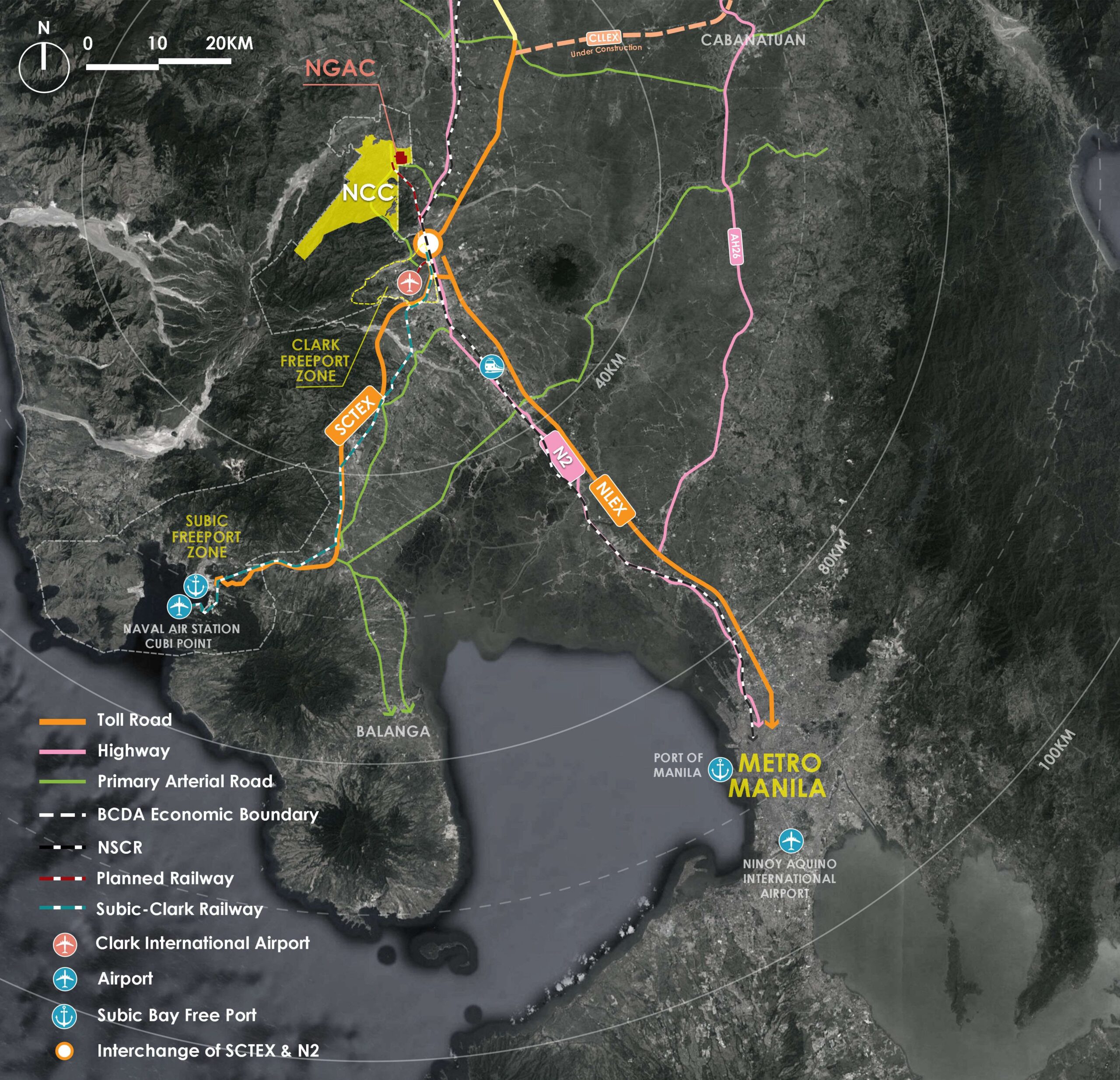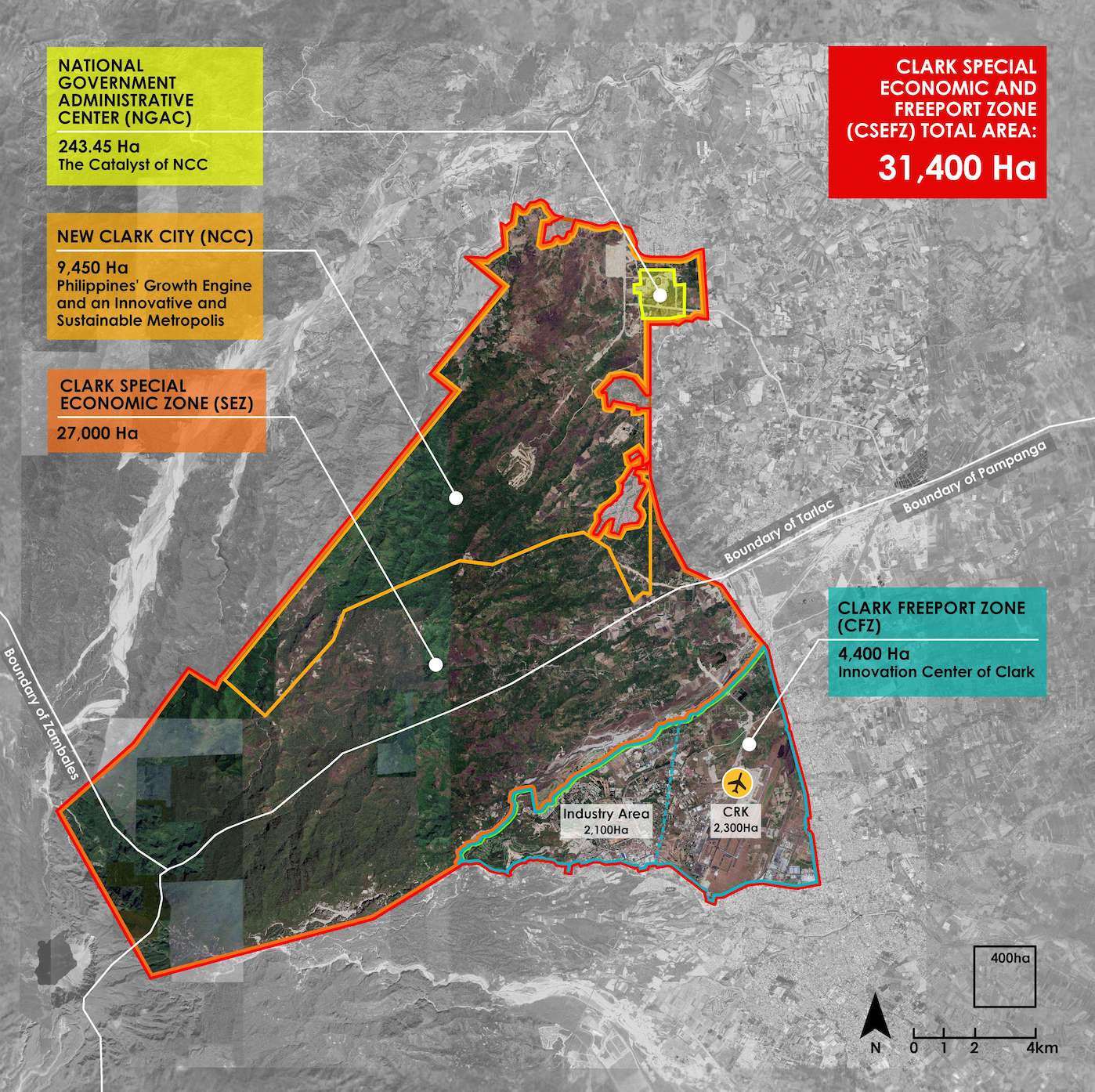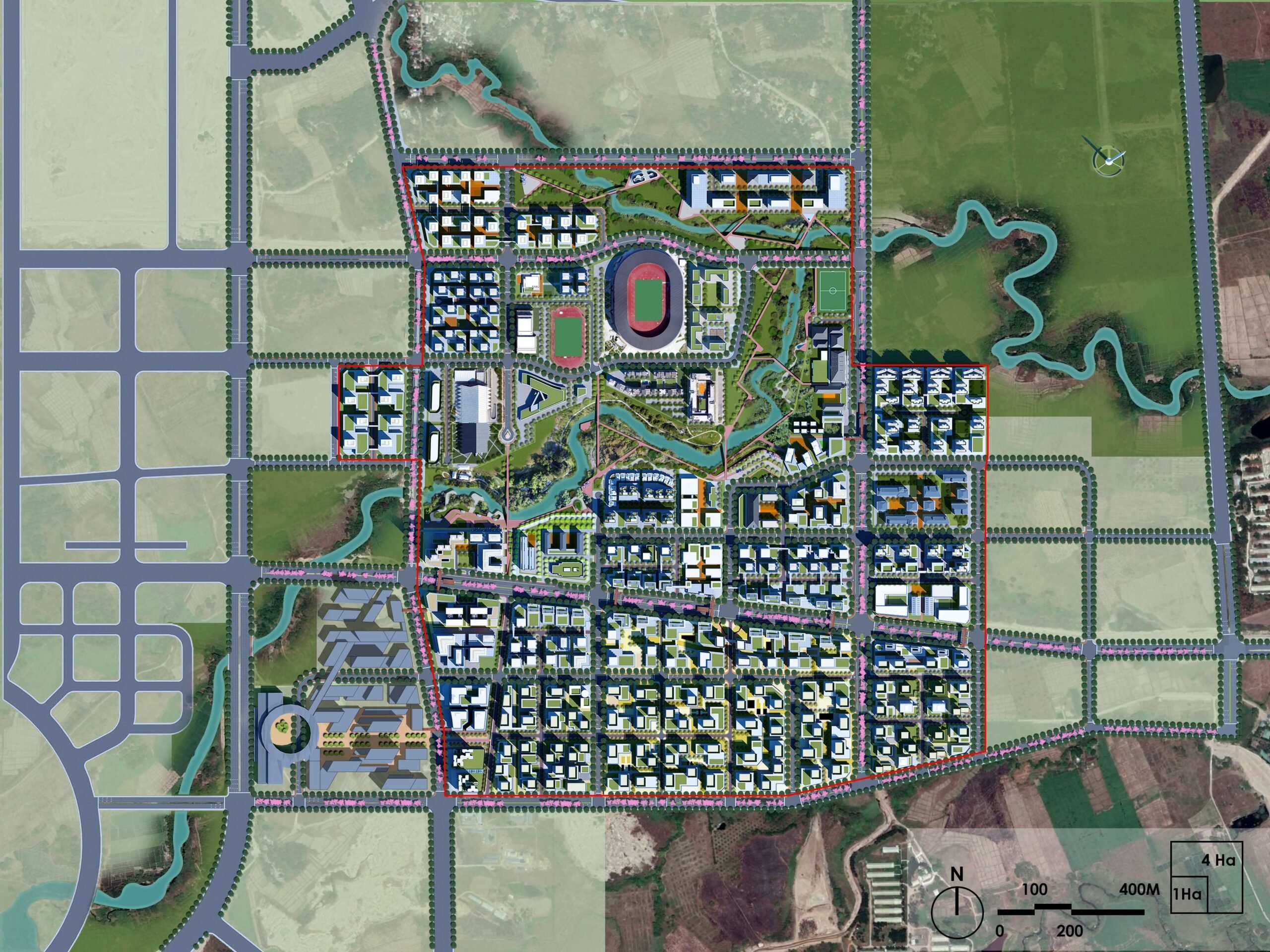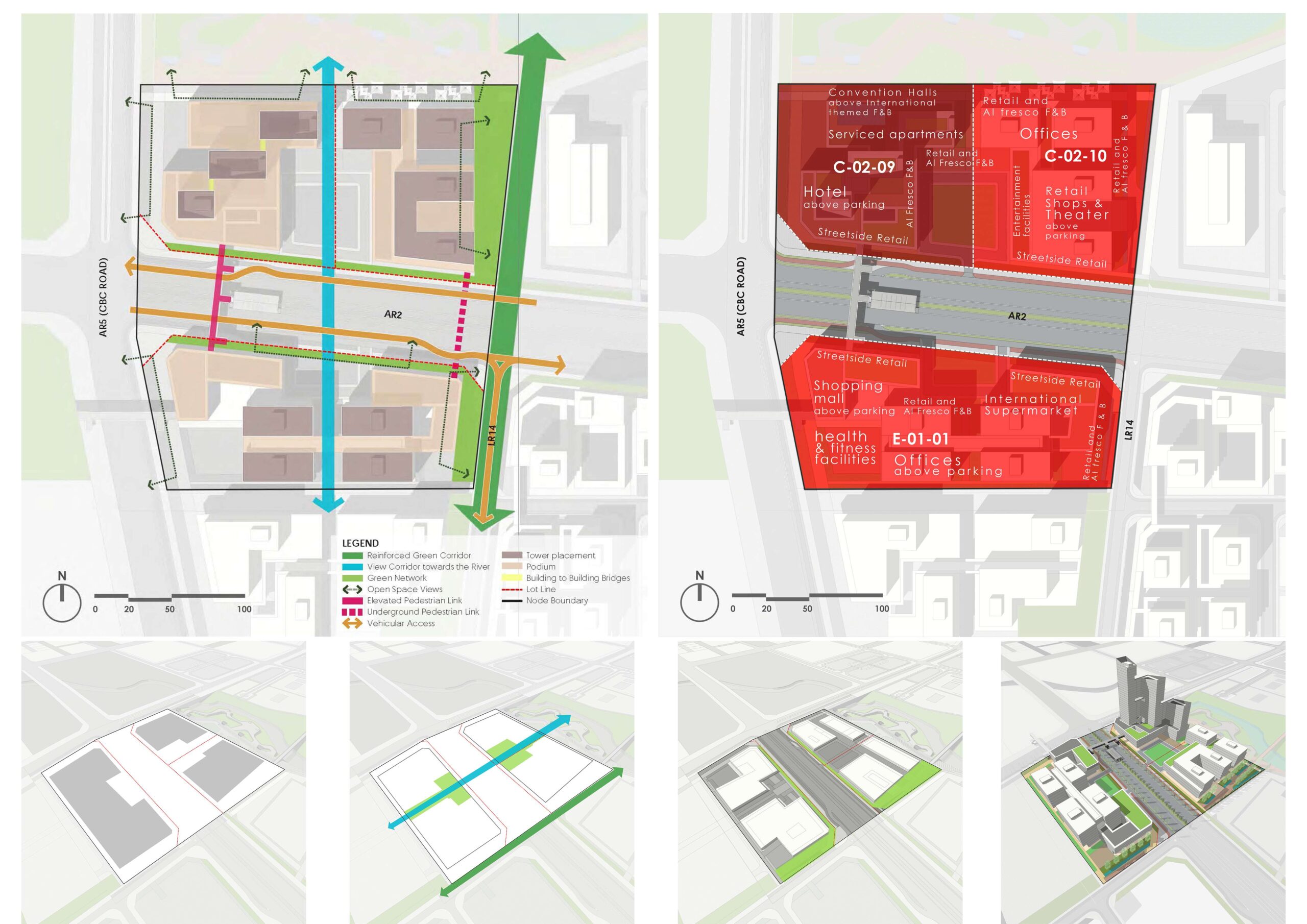Menu
Planning a
Disaster-Resilient
City
Disaster-Resilient
City
A showcase for smart sustainability in the Philippines.
The conservation and enhancement of Cutcut River
habitat and park flowing along National Government
Administrative Centre (NGAC) brings together and
reconnects people with nature
Abstract: Planned as the gateway to New Clark City in the Philippines, the National Government
Administrative Centre (NGAC) aims to be a smart, sustainable and disaster-resilient metropolis for
the country. Surbana Jurong’s master plan update of NGAC has evolved to integrate the built sports
venues alongside government functions to serve as the country’s primary back-up administration
centre in response to the challenges of congestion, pollution, calamities and other disruptions in
Metro Manila. This is set to raise the confidence of the people and businesses choosing to reside in
this great metropolis.
Introduction to the National Government Administrative Centre
The National Government Administrative Centre (NGAC) is a catalyst development that will serve as
the symbolic gateway and civic district of the New Clark City (NCC) in the Philippines.
After hosting a successful Southeast Asian Games in 2019, the master plan update of NGAC evolved
to integrate the built sports venues alongside government functions to be the country’s primary
back-up administration centre in response to congestion, pollution, and future risks from calamities
and other disruptions in the capital region. The vision for the district is “An Active, Distinctive and
Innovative Civic Hub and Cultural Heart of New Clark City.”
The vision for the district is “An Active, Distinctive and Innovative Civic Hub and Cultural Heart of New Clark City.”
Seeking to advance NCC as the Philippine’s growth engine, the Philippines Japan Initiative for Clark
Green City Inc. (PJIC) (See Note 1 below) has been charged to engage local and international
expertise required to shepherd, support, and realise this ambition. Forging the PJIC partnership
allows the semi-private entity to react rapidly and objectively in the procurement of services to
initiate and progress the master plan.
In May 2021, Surbana Jurong delivered the detailed concept master plan and the design standards
and guidelines of NGAC, thereby setting forth a development framework for the district with fully
integrated infrastructure and utilities to facilitate efficient implementation of future developments.

New Clark City, a greenfield satellite city, linked via
existing highways and future commuter rail from Metro
Manila and cargo rail from Subic port
With the participation of several private
investors and government agencies, Phase 1A
(See Note 2) in the NGAC was planned and
constructed in record time by MTD Capital
Berhad. West of NGAC district, Filinvest Land
Inc’s mixed-use and industrial estate for future
job opportunities is now under construction.
South of the commercial district, NCC’s central
park is at its conceptual design stage (a study
funded by the Foreign Commonwealth and
Development Office) to establish the city’s
public heart. The confidence of these pioneer
developers and partners was encouraged by
PJIC’s committed cooperation and the
government’s infrastructure initiatives prioritising
Clark and Northern Luzon.
Located on a former US Air Force facility (Clark
Air Base), the Clark Special Economic and
Freeport Zone (CSEFZ) was developed and split
into two distinct development zones: Clark
Freeport Zone and New Clark City.
The Freeport Zone includes an industrial estate, a logistic hub, with facilities for training,
conferences, tourism and leisure, and Clark International Airport. To the north, NCC was conceived
as a satellite city of Metro Manila to become the Philippines’ largest and first smart, sustainable and
disaster-resilient metropolis. The NGAC will be the symbolic gateway and civic district of this
ambitious metropolis.
New Clark City was conceived as a satellite city of Metro Manila to become the Philippines' largest and first smart, sustainable and disaster-resilient metropolis.

Clark: The subdivided economic zones within the former US military base in the Philippines
Advantages of NGAC
Located away from key disaster zones, NGAC is well-positioned to become a resilient and attractive
alternate administrative centre to the Philippines’ government and national agencies that are currently
in Metro Manila.
The NGAC district aims to serve as a model development within NCC and perhaps even Southeast
Asia. The parcels are subdivided in reasonable block sizes for walkability, at the same time enticing
local and international upstart locators (See Note 3) and major developers to invest in the growth of
NCC, leading to a vibrant mix of uses for its residents, workers, and visitors around the clock. On top
of that, the estate is also governed in a transparent and objective process to strengthen a sense of
pride amongst its citizens and enhance the national identity.
Focused on nature conservation, healthy living, social inclusiveness, national identity and good
governance, the detailed master plan of NGAC will ensure that the vision and guiding principles are
upheld to optimise available land for high quality and high value uses, with the Cutcut River habitat
and park along NGAC preserved to reconnect the people with nature. The NGAC plan and its design
standards and guidelines (DSG) shall serve as a guide for potential and like-minded locators to help
achieve a vibrant and resilient district.

NCC’s symbolic gateway and civic centre, NGAC district hosted the 2019 SEA Games catalysing development and evolving as the country’s primary
back-up administration centre in response to congestion, pollution, and future risks from calamities and other disruptions in the capital region
As a system for managing developments in NCC, the DSG shall remain flexible and adaptable to
future changes in the local context and fluctuations in market demand. Furthermore, the document
describes a set of design criteria encouraging locators to go beyond minimum development
requirements and to create a cohesive and an attractive environment embodying the vision of NCC.
To achieve that, the key objectives for the detailed design and guidelines are aimed to advance the
master plan through urban and infrastructure design standards benefitting all stakeholders and end
users. The guidelines also propose a comprehensive development control framework guiding and
managing buildings, infrastructure, and public spaces; and introduce contemporary and global-best
practice development concepts facilitating and attracting investments.
A diverse mix of uses and functions have been proposed within each precinct, evident in the five
urban nodes that were selected primarily to articulate and apply the DSG, and to showcase the
vision, aspirations and design intent of the District.
These nodes were purposely chosen just to the south of Cutcut River for this is not built-up yet and
are outside the area earmarked for an existing developer.
By demonstrating the district’s potential, these nodes shall serve as distinct neighborhoods offering
unique destinations and establishing varied precinct character throughout.
How Surbana Jurong assisted stakeholders
More importantly, SJ’s tasks included assisting key stakeholders by drafting an institutional and
organisational framework supportive of their efforts and aspirations. Through capacity building
workshops, Bases Conversion and Development Authority’s planning team, principal stakeholders
and authorities were trained by imparting the group with the relevant skillset and knowledge required
to assess proposed projects in the implementation stages. The workshops covered the understanding
of planning and review processes, which were then translated into a Development Training Manual to
serve as an instructional guide for relevant parties and a source of reference for future stakeholders.
SJ's tasks included assisting key stakeholders by drafting an institutional and organisational framework supportive of their efforts and aspirations.
When NCC was conceptualised as a satellite city to Metro Manila and the hub of Central Luzon, the
Philippines government planned to connect the area through its ‘Build Build Build’ infrastructure
program (See Note 4). During the 2019 SEA games, the sports venues and facilities built in record
time was largely funded by the government along with private sector support.
This event prompted more interest from locators and commitments from several government agencies
and educational institutions to plan their developments here. Meanwhile, the Office of the President is
encouraging all national level departments to designate enough staff (phased according to clusters) at
NCC allowing their group to function in case of major disruptions in Metro Manila.
Future-forward planning model
During all stages of planning updates for NGAC, the detailed design and DSG of NGAC district will
uphold its forward-looking vision and guiding principles. NGAC shall be a model district in NCC
showcasing a distinct national identity, sense of belonging and better quality of life while serving as a
resilient, future-proof and landmark administrative and recreational centre in the nation and beyond.
The influence of the planning efforts in NCC and specifically through NGAC district will be far
reaching. It raises the standard of what cities should be in a country aspiring for a high-quality
environment in its urban centres. More importantly, it will uplift the confidence and trust of the people
and businesses choosing to live and locate in this great metropolis.

Design Standard Guidelines:
“Beacon by the River”: Riverpoint will be the key landmark along Cutcut River and at the corner of major access roads to NCC serving as the primary meeting venue for a variety of national government functions and international conventions or events throughout the year
“Beacon by the River”: Riverpoint will be the key landmark along Cutcut River and at the corner of major access roads to NCC serving as the primary meeting venue for a variety of national government functions and international conventions or events throughout the year
Notes:
- Philippines Japan Initiative for Clark Green City Inc. (PJIC) is a government to government joint cooperation between the Bases Conversion and Development Authority (BCDA) and Japan Overseas Infrastructure Investment Corporation for Transport and Urban Development (JOIN) tasked to implement the future development of New Clark City initially planned by Aecom in 2017.
- Phase 1A of NGAC served as the venue for the Southeast Asia Games in 2019 comprised of the following built facilities: sport stadium, aquatic centre, athlete village, government office, polyclinic, practice field, and a partial National River Park Corridor through a “build-and-transfer” procurement process.
- Locators are any person or entity, including a condominium corporation who is the registered owner of any lot within a development estate, or a buyer under a contract to sell, a mortgagee or other security holder, under foreclosure of the mortgage or exercise of his rights under the security arrangement, whether in actual possession of the lot.
- Increasing connectivity to Clark, the ‘Build Build Build’ (BBB) program on infrastructure development includes Subic-Clark cargo rail (currently in planning and design), Philippine National Rail (PNR) extension from Malolos-Clark (under construction), and expansion of Clark International Airport Terminal (construction was recently completed and will start operation in Q4 2021.)
Project
National Government Administration Centre (NGAC) District
Location
New Clark City, Tarlac, Philippines
Size
243 ha
Status
Master Plan Update and Urban design completed in May 2021 that integrated the
existing 2019 SEA Games sports venues
Client
Philippines Japan Initiative for New Clark City, Inc.
Services
Master Planning and Infrastructure Planning, Urban Design, Design Standard
Guidelines, and Capacity Building
Collaboration
SMEC Philippines (Infrastructure)
Malaysia (Master Plan Support)
Malaysia (Master Plan Support)
Firm / BU
SJ Planning Group
Project Lead
Jonace BASCON
Project Team
Louise Feng Luye, Livia Tan Shi-Qi, Yang Zhimin, Adrian Guzman, Novane Hizon,
Gurusamy Isakkipandian
Keywords
Government Center, Sports Hub, Civic District
The SEEDS Journal, started by the architectural teams across the Surbana Jurong Group in Feb 2021, is a platform for sharing their perspectives on all things architectural. SEEDS epitomises the desire of the Surbana Jurong Group to Enrich, Engage, Discover and Share ideas among the Group’s architects in 40 countries, covering North Asia, ASEAN, Middle East, Australia and New Zealand, the Pacific region, the United States and Canada.
Articles at a glance







